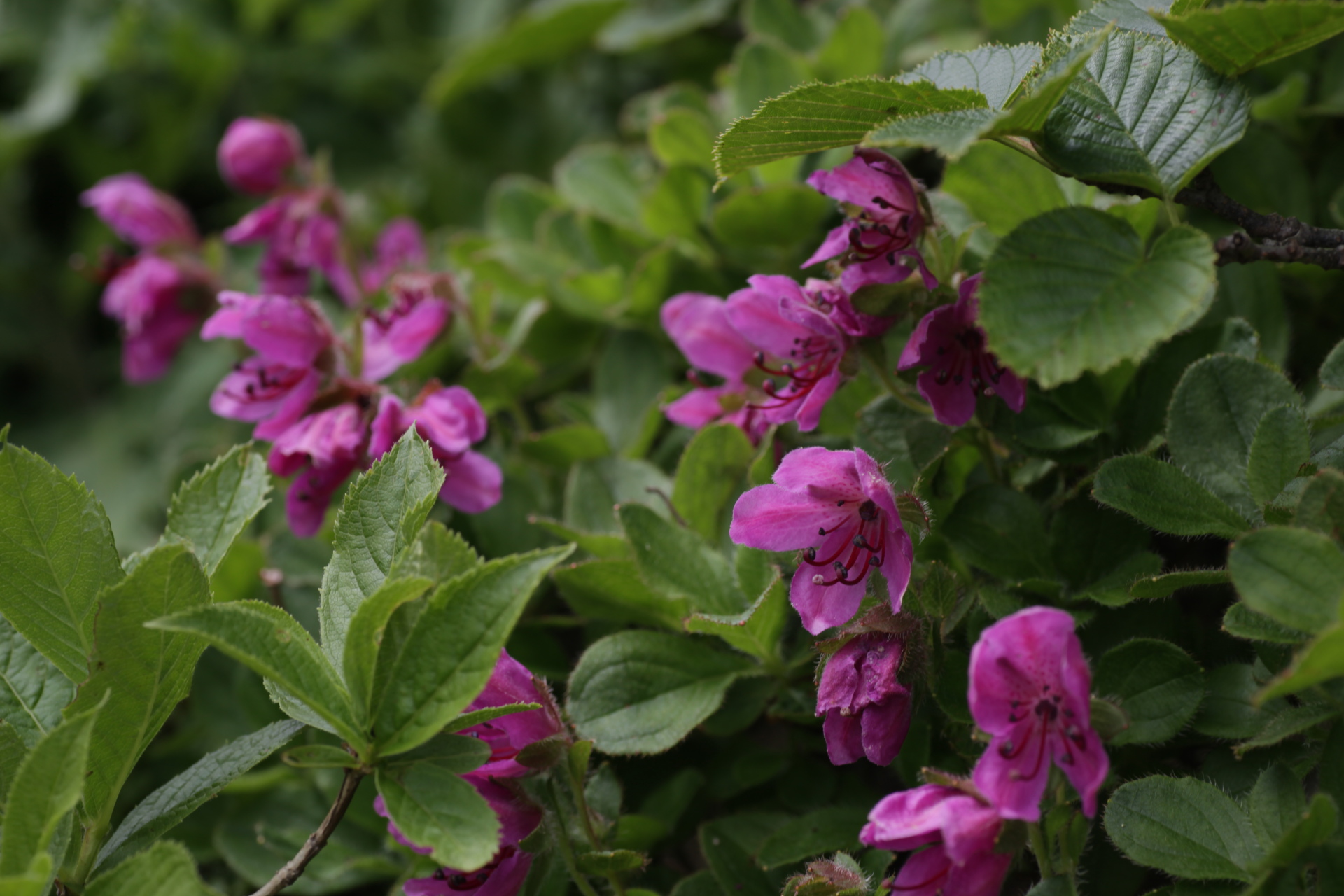Kamchatka Rhododendron
(Rhododendron camtschaticum)

Description
“Pet poisonous” – Toxic parts: entire plant Rhododendron camtschaticum, commonly known as the Kamchatka Rhododendron or Kamchatka Rosebay, is a species of evergreen shrub that belongs to the Rhododendron genus. This plant is native to the Kamchatka Peninsula in eastern Russia and is known for its showy flowers and attractive foliage. In this article, we will discuss the various aspects of Rhododendron camtschaticum, including its taxonomy, morphology, habitat, cultivation, and uses. Taxonomy Rhododendron camtschaticum was first described by the Russian botanist Carl Friedrich von Ledebour in 1829. The plant belongs to the family Ericaceae, which includes other well-known plants such as blueberries, cranberries, and heather. Rhododendron camtschaticum is classified under the Rhododendron subgenus Hymenanthes, which comprises species with deciduous or evergreen leaves and bell-shaped flowers. Morphology Rhododendron camtschaticum is an evergreen shrub that grows up to 1.5 meters tall and wide. The leaves are leathery, dark green, and oblong to elliptic in shape, with a length of 3 to 10 cm and a width of 1 to 3 cm. The leaves are arranged in a spiral pattern and are covered with fine hairs on the underside. The plant produces large clusters of flowers that are bell-shaped, with a diameter of 2.5 to 4 cm. The flowers are usually pink or white and have a distinctive fragrance. The fruit is a capsule that contains numerous small seeds. Habitat Rhododendron camtschaticum is native to the Kamchatka Peninsula in eastern Russia, where it grows in subalpine and alpine zones at elevations of 900 to 1800 meters. The plant is well adapted to the harsh climatic conditions of its natural habitat, including cold winters, short growing seasons, and high rainfall. It prefers moist, well-drained soil that is rich in organic matter and is slightly acidic. Cultivation Rhododendron camtschaticum is a popular ornamental plant in gardens and parks, especially in areas with a similar climate to its native habitat. The plant is hardy in USDA zones 3 to 7 and can tolerate temperatures as low as -40°C. It prefers partial shade and moist, well-drained soil that is rich in organic matter. The plant can be propagated from seed, cuttings, or layering. Pruning is recommended after flowering to maintain the plant's shape and encourage bushy growth. Uses Rhododendron camtschaticum has several uses, both ornamental and medicinal. In gardens, the plant is used as a specimen shrub or as a hedge. It is also suitable for rock gardens and alpine gardens, where it adds a splash of color in spring and early summer. The plant is a good source of nectar for bees and other pollinators. In traditional medicine, Rhododendron camtschaticum has been used to treat various ailments such as fever, diarrhea, and stomach problems. The plant contains several bioactive compounds such as terpenoids, flavonoids, and phenolic acids, which have been shown to have antimicrobial, anti-inflammatory, and antioxidant properties. However, the plant is also known to contain toxic substances, such as grayanotoxins, which can cause serious health problems if ingested in large amounts. Conclusion Rhododendron camtschaticum is a beautiful and versatile shrub that is well adapted to harsh climatic conditions and is a valuable addition to gardens and parks. Its showy flowers and attractive foliage make it a popular ornamental plant, while its medicinal properties have been recognized by traditional healers for centuries. However, it is important to note that the plant contains toxic substances and should not be consumed without proper preparation or dosage. Overall, Rhododendron camtschaticum is a fascinating plant that deserves more attention from plant enthusiasts and researchers alike.
Taxonomic tree:







